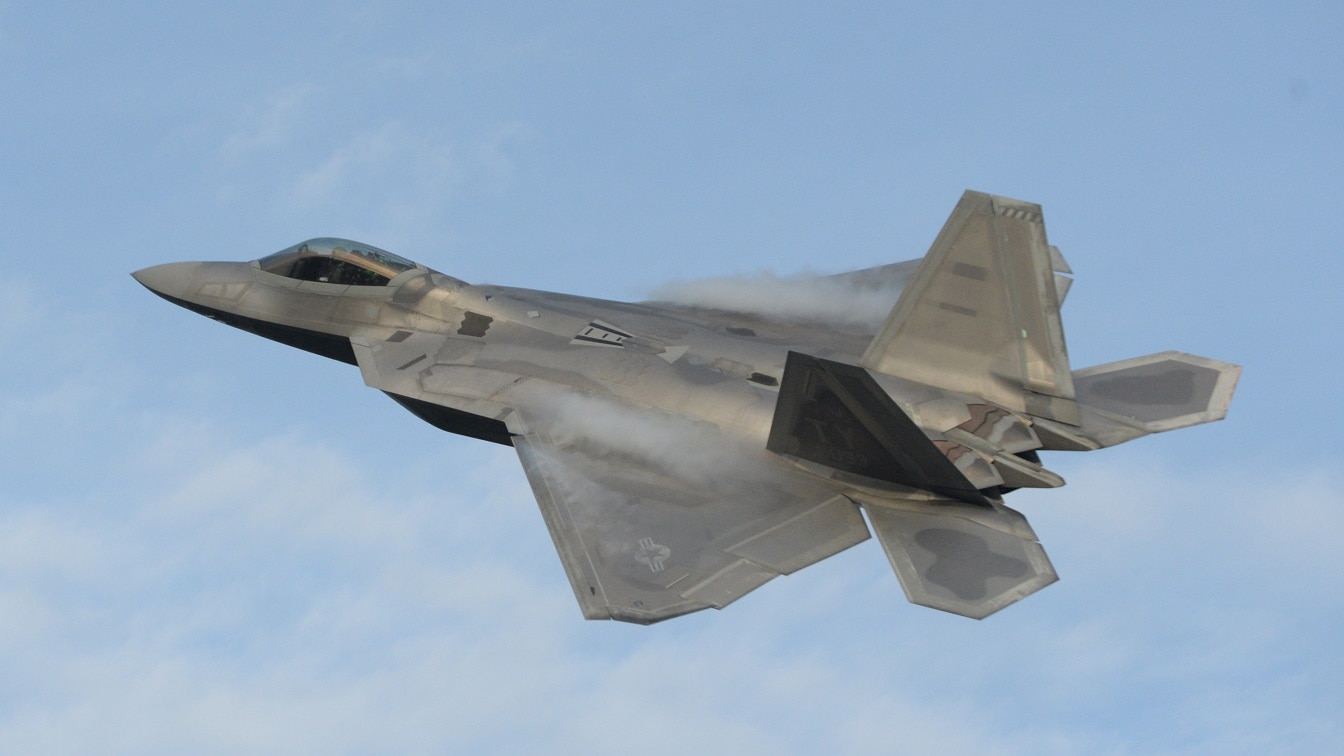F-22 Raptor Fighter: Time to Retire? On Friday, President Trump confirmed that Boeing secured a contract to develop the US military’s Next Generation Air Dominance (NGAD) program, a project valued at over $20 billion.
The NGAD sixth-generation stealth fighter will replace the F-22 Raptor. Trump confirmed the long-held rumors that the NGAD stealth fighter has been flying for the past five years. The new F-47, as it has been named, will replace the F-22 in the next decade.
“The F-47 will be the most advanced, most capable, most lethal aircraft ever built,” Trump told reporters. “America’s enemies will never see it coming.”
The new aircraft will have state-of-the-art stealth capabilities, engines that will power them past Mach 2, and the capability to quarterback stealth drone fighters, keeping American air dominance intact.
If The F-47 Is Stealthier Than The F-22 Raptor, Watch Out
The F-22 Raptor is the oldest stealth fighter worldwide; it was designed in the 1990s and has been flying for over 20 years.
Despite this, it is still the stealthiest fighter bar none.
The F-22 has a radar cross-section estimated to be as much as 15 times smaller than the F-35 and roughly 100 times smaller than China’s J-20.
The F-22 is still the standard against which every other stealth fighter is measured. Even after 20 years of service, it is still the best stealth fighter. But the rest of the world is slowly catching up. And it’s time, as #1 will soon end and be replaced by the F-47.
Why Does The F-22 Raptor Need to Be Replaced?
It is time. The airframes, while still having plenty of life left, have a lot of hours on them. More than anything, the Raptor was just a victim of bad timing. The USAF had this incredible fighter, but with no one left to fight, the Soviet Union had collapsed. The US was spending trillions of dollars fighting two wars in Iraq and Afghanistan, and budget cuts were looming.
Then, the US made a big mistake. It didn’t pause the F-22 production line—it closed it. Yes, the F-22 was incredibly expensive, but the cost would have been reduced if they had kept producing them. But the assembly line was shut down.
Only 186 Raptors were produced, and currently, there are only between 150-180 combat-capable aircraft. The US has been pouring money into upgrades to keep it atop the heap, but that 180 number is a hard keep up. If an aircraft suffers an accident or is lost in combat, it can not be replaced.
The high cost of maintenance and operation is prohibitive. And the Chinese have produced hundreds of J-20s. The NGAD F-47 will have a more considerable technological advantage over anything our enemies have in the skies.
With production getting up to speed to produce F-47s, the F-22 Raptors will still be around until the fleet of F-47s is manned and ready. The good thing is that with the host of new technology for the F-47, the F-22 will benefit from getting some of it as the Air Force upgrades the Raptors to keep them with the best equipment.
The Air Force wants to retire 32 older Block 20 F-22s that cannot face combat. The Block 20s were primarily designed for training purposes and were not combat-coded. The Eurasian Times reported, “Additionally, these jets belong to the early production models known as Block 20 jets, primarily designed for training purposes and are not combat-capable.”
Regarding this batch of older F-22s, LTG Richard Moore states, “They will never be a part of the combat force.”
The Air Force could save around $500 million a year by retiring them. It would cost the Air Force $3.5 billion to bring these 32 F-22s to combat capability.
The Air Force loves the F-22, but it simply doesn’t have enough of them, and with no production line to make more, it is time to transition to the F-47 and the F-35. The strange part of the long saga of the F-22 is that it will be retired before the airframe it replaced, as the F-15EX will continue to fly on.
It is an expensive machine. Alex Hollings wrote last fall, “The F-22 upgrade budget is enough to purchase 132 new F-35As and still have enough left over for a very comfortable retirement. In terms of the 150 combat-coded F-22s in America’s stable, that shakes out to roughly $72.6 million in upgrades allocated to each individual Raptor.”
The F-47 and the F-35 will be able to operate the Air Force’s Collaborative Combat Aircraft (CCA) program, a multi-pronged initiative to test, develop, and implement new autonomous and manned-unmanned aircraft teaming concepts.
It is also known as the Loyal Wingman concept, which is capable of flying independently or in small groups and will be used to counter China’s anti-access/area-denial (A2/AD) capabilities. The F-22 will be able to deploy with these as well.
It may be on the road to retirement, but it is still the king of the fighters.
About the Author and Biography
Steve Balestrieri is a 19FortyFive National Security Columnist. He served as a US Army Special Forces NCO and Warrant Officer. In addition to writing for 19FortyFive, he covers the NFL for PatsFans.com and is a member of the Pro Football Writers of America (PFWA). His work was regularly featured in many military publications.

